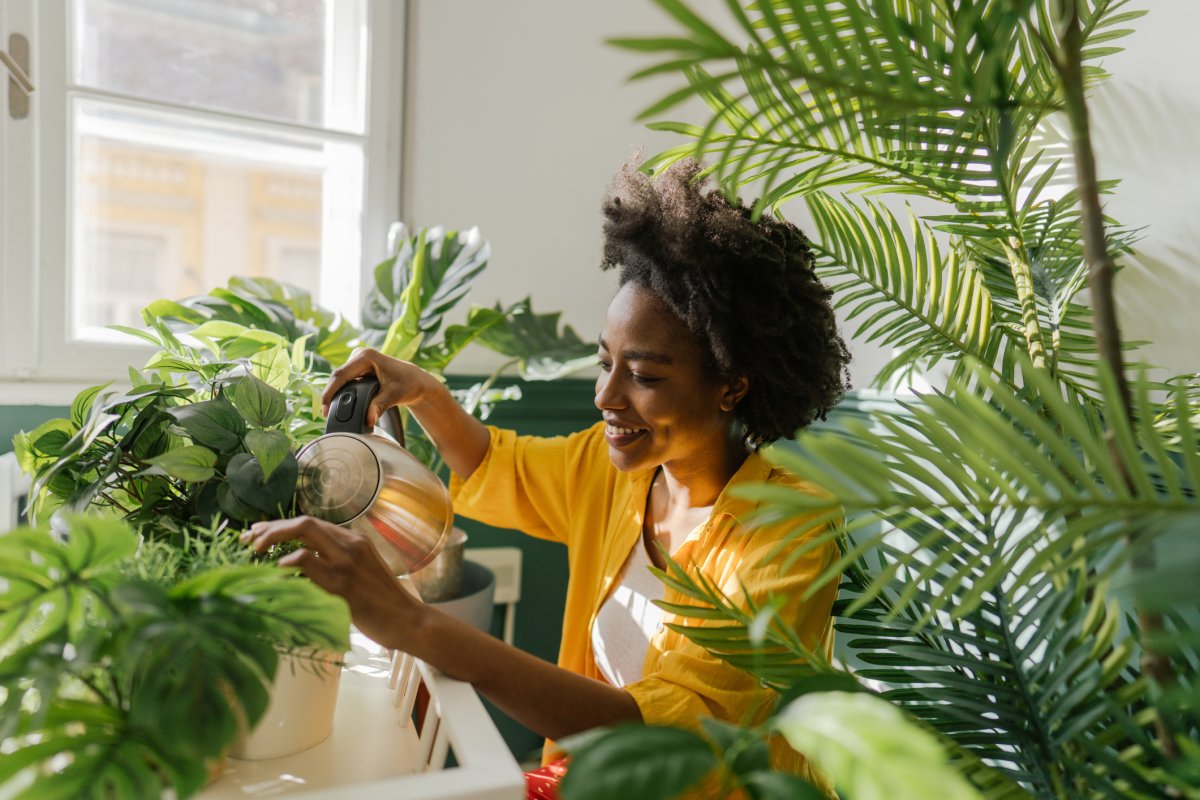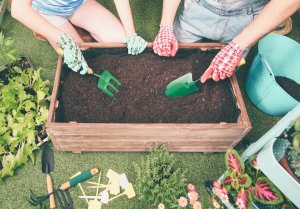We may earn revenue from the products available on this page and participate in affiliate programs. Learn More ›
When we think of fertilizer, applying it to the lawn and garden to promote healthy plant growth often comes to mind. However, to keep houseplants thriving, we also need to understand the appropriate amount and type of fertilizer they need. In addition to adding greenery and interest to our homes, houseplants can provide many benefits such as improving indoor air quality and boosting emotional well-being.
Learning why houseplants need fertilizer, how to choose from among different types, and when to fertilize houseplants can help ensure that your beautiful plants continue to flourish in your home for as long as possible.
Why Houseplants Need Fertilizer
Like all plants that grow outdoors, houseplants need nutrients to thrive, says Andrew Messinger, a long-time gardener and gardening writer with a column in www.27east.com in Southampton, New York. In nature, plants rely on decaying organic matter that releases nutrients as the matter decomposes, but houseplants are removed from their natural habitat, so their containers lack the micronutrients and macronutrients that exist in outdoor soil. “Houseplants are usually grown in soils (media) that are materials like peat, bark, and other wood products,” says Messinger. “These provide only miniscule to no nutrients to the plants, so we need to add fertilizer.”
Fertilizers that work well for indoor plants provide essential nutrients to ensure they remain strong, healthy, and pest-free. Fertilizers contain a mixture of macronutrients—nitrogen (N), phosphorus (P), and potassium (K)—along with traces of micronutrients. Generally, green houseplants require a balanced NPK ratio or one that’s slightly higher in nitrogen. Choose fertilizer with a higher balance of phosphorus for flowering plants like African violets, oxalis, and peace lilies.
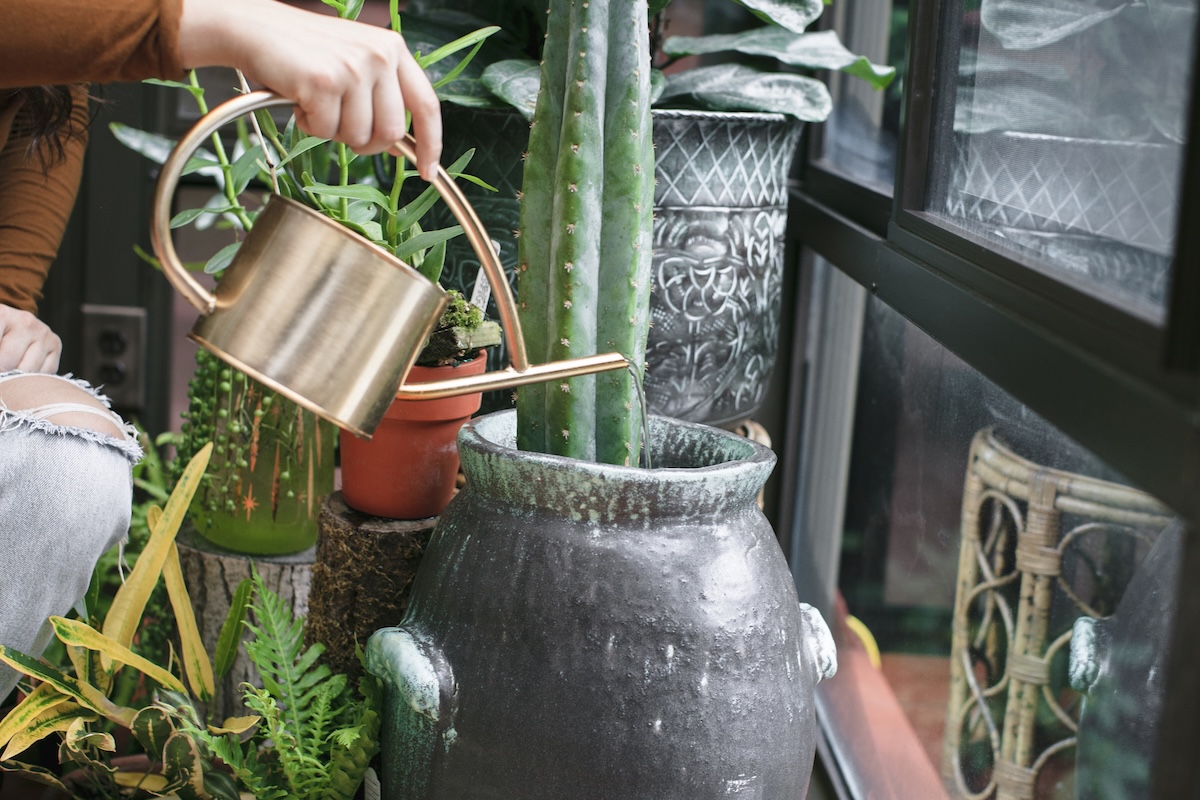
Types of Indoor Plant Fertilizer
There are three categories of fertilizer—liquid, granular, and slow-release pellets—that each have their pros and cons. Lisa Eldred Steinkopf, houseplant enthusiast, freelance writer, and blogger at The Houseplant Guru, often uses a water-soluble fertilizer but doesn’t advocate for one type over another. “Use what you have. It doesn’t matter as long as you follow the directions,” she advises.
Liquid: Often recommended for houseplants, liquid fertilizer needs to be mixed with water before you apply it to plants’ leaves and the soil. This helps make it easier to apply and to prevent overfertilization. Keep in mind that liquid fertilizers seep through soil and plant systems quickly, so they need to be applied frequently—every 1 to 2 weeks.
Granular: This affordable and effective option is great when initially planting or repotting a plant. To ensure it stays thoroughly mixed into the soil, reapply the granules after 4 to 6 weeks. Sprinkle the fertilizer on top of the soil and then mix it in. Synthetic fertilizer gradually dissolves as the plant receives water, taking about 30 days. If you use organic fertilizer, expect it to take about a month to dissolve completely.
Slow release: This type of fertilizer comes in several forms, including pellets, spikes, pods, and capsules. Since they release nutrients gradually over time, the fertilizers can last 3 to 6 months. Organic formulas also release slowly (naturally), but seldom come labeled as slow-release fertilizer.
You’ll also want to choose whether you want to use a traditional or organic fertilizer. Certified organic fertilizer, such as Espoma, is made from minimally processed natural ingredients and is free from harmful chemicals and synthetics. “Unlike chemical or traditional fertilizers, organic fertilizers won’t burn the plant’s roots, and organics become available to the plant’s roots over time, not over the short period that chemical fertilizers work,” explains Messinger. While they are safer and better for the environment, their nutrient value isn’t as concentrated as inorganic products and they might smell unpleasant due to their natural ingredients. Inorganic or synthetic fertilizers consist of a balanced blend of minerals, along with some chemicals, and typically cost less than organic alternatives.
Finally, if you’re handy and want to cut costs, you can create homemade fertilizer. All you need is three household ingredients: Epsom salt, which contains sulfur and magnesium—nutrients that are beneficial for plant growth; baking soda to stimulate blooms and reduce the risk of fungal disease; and household ammonia, which contains nitrogen to promote healthy root growth.
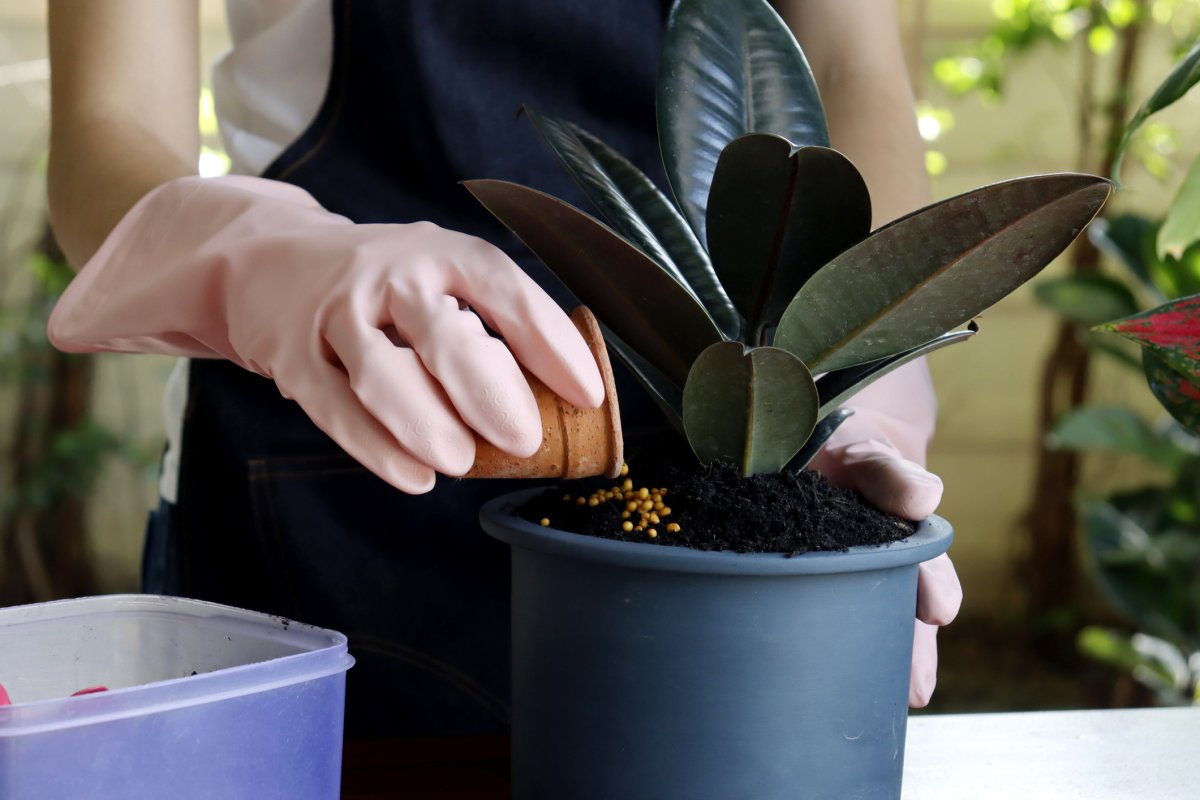
How to Apply Fertilizer to Houseplants
Once you decide which type of houseplant fertilizer you want to use, you’ll need to understand how best to apply it. “Whatever product you use and in what form doesn’t matter as long as you apply at the rates recommended. I usually use less than it calls for. More is never better for a plant,” says Steinkopf.
Here are some additional tips regarding fertilizer application:
- Dilute liquid fertilizer according to the manufacturer’s instructions and pour it onto the plant’s soil.
- Sprinkle granular fertilizer on the soil’s surface, making sure to mix it into the top 3 inches of soil before watering it.
- Refer to the manufacturer’s directions for applying slow-release fertilizers, as they vary depending on whether they come in capsule, pellet, pod, or spike form.
- Apply homemade plant food carefully.
How Often Houseplants Need Fertilizer
There are a couple of ways to determine the best fertilization schedule for your plants. First, the type of fertilizer you choose can dictate the frequency. Typically, you will apply liquid fertilizer every 2 to 4 weeks, granular fertilizer every 4 to 6 weeks, and a slow-release formula every 3 to 6 months.
The season also plays a role. During the spring and summer, most indoor plants benefit from monthly fertilization. However, in autumn and winter, when plants enter dormancy, it’s best not to fertilize them. Steinkopf finds that houseplants do not need fertilizer in the months when they are not actively growing, often from September through March, depending on where you live. “If your plants are sending out new growth, start fertilizing them,” she says. “If they are growing under lights, fertilize throughout the year. You can fertilize every fourth watering or approximately once a month, or with ¼ strength every time you water,” she says.
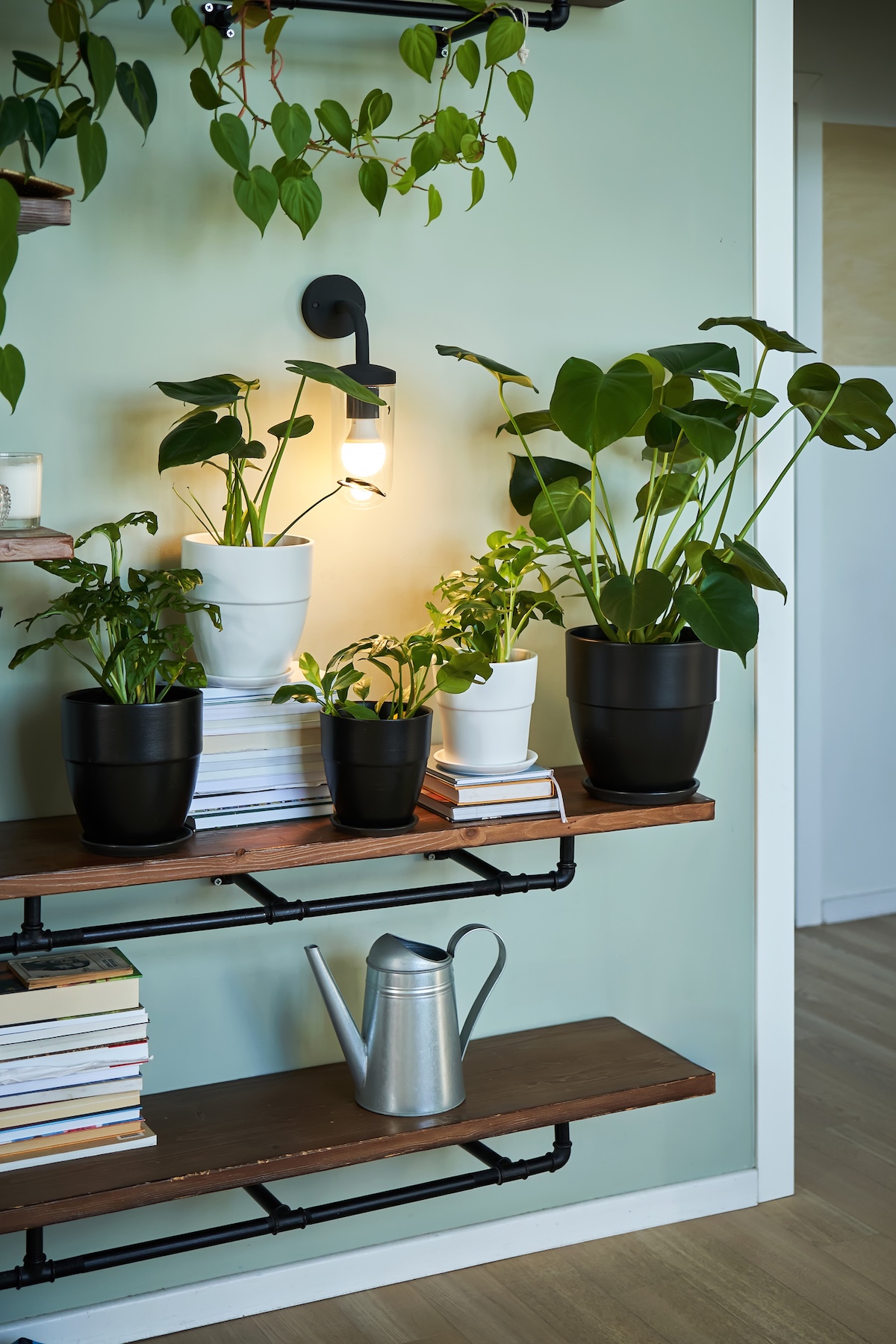
Ways to Identify Overfertilized Houseplants
What you want to avoid is overfertilizing, which tends to be a common problem. “If you are overfertilizing a houseplant, it may show signs of being in distress, such as brown spots on its leaves or leaves that are dropping,” says Steinkopf. Other signs of overfertilization include wilting, burnt leaves, and dried leaf margins.
Pay attention to the specific symptom to determine how you can treat the plant. If you spot fewer flowers with excess foliage, the plant may be getting too much nitrogen fertilizer. Switch to a more balanced fertilizer to resolve this issue. Yellowing and wilting lower leaves may indicate overfertilization, so cut back on the amount or frequency of fertilizing.

